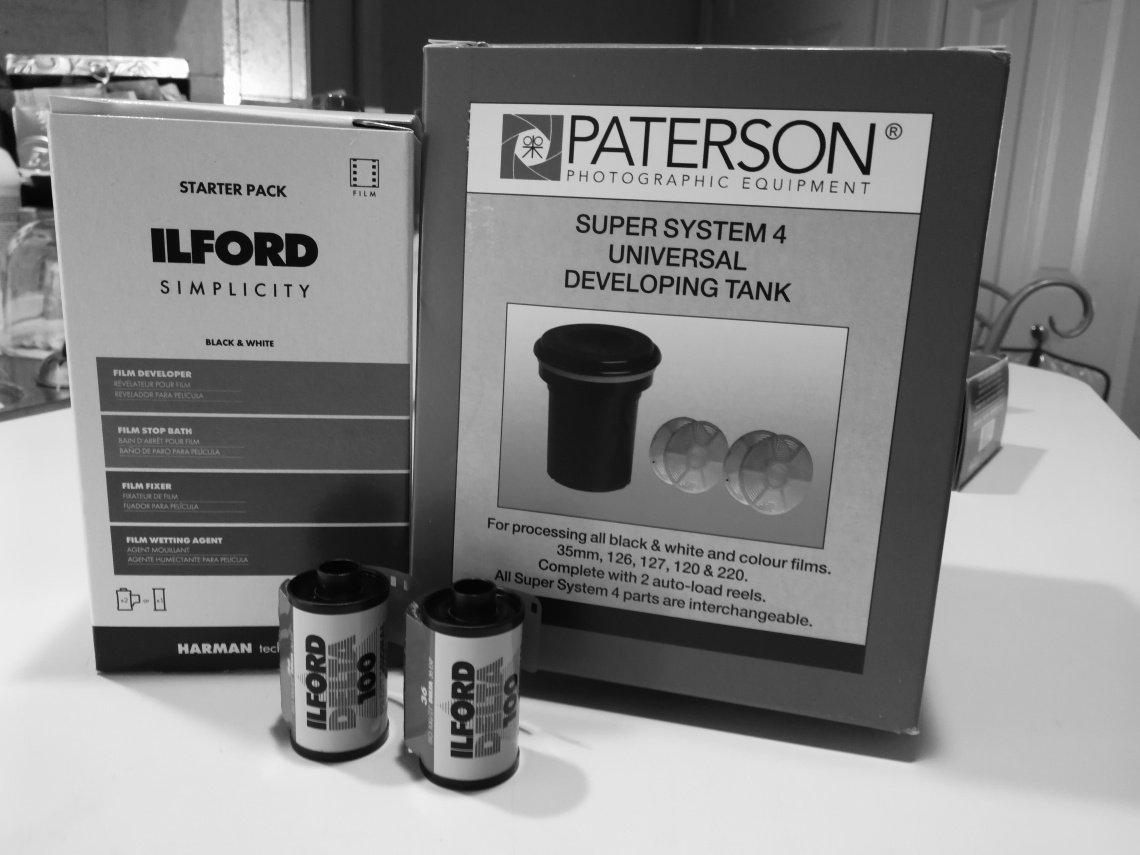Brand loyalty starts at an early age. I was probably 9 years of age when my father brought home an Olympus light microscope he had bought from one of his grad students. In 1980 I was thirteen and on vacation in Hong Kong, when my father picked up the brand new compact Olympus XA 35mm film camera. I wish I still had the microscope but I still have the XA¹ and used it extensively for the next two decades.
In the 1960s, the Japanese Ministry of International Trade and Industry (MITI) was intent on reducing the number of competing Japanese companies so that one large company could benefit from economies of scale. At the time Japan had many small automobile and optical companies. Despite Olympus’ long corporate history, it was a small player and had to find and dominate a niche specialist market in order to stay independent. Fortuitously they had just hired a young new designer named Yoshihisa Maitani who would blaze a four decade trail starting with the Pen F, the Trip 35 and then the OM-1: models which would brand the company as a maker of innovative, ergonomic and compact cameras with a supporting ecosystem of compact, optically excellent lenses.
The point of this exercise in nostalgia is to reacquaint ourselves with the compact XA and LT1 film cameras and what made Olympus a company at the end of the last century, and where it needs to go moving forward. And if these two cameras are still relevant in the digital age or just interesting museum pieces.
Maitani employed full sized clay models in sculpting the body of the XA in order to ensure a snag free pocket fitting form as well as appealing to the feminine esthetic since in Japan cameras are very much a fashion accessory. Maitani stated in an interview, “the goal was, this is my lifelong theme, a pocketable camera that can be carried anywhere.” A camera that needed neither a case or a lens cap, the unique clam shell case would function as both.
Maitani did not want a collapsible lens, he wanted the camera to be ready to shoot as soon as the clam shell halves were pulled open. What resulted was a 6 element reverse retrofocus type lens with an inward focusing third element that was shorter than its 35mm focal length. Paired with an accurate double image coupled rangefinder with parallax correction marks, high quality photos rivaling full bodied SLRs were possible. It was the camera that professionals carried on their vacations.
Maitani’s final design was the hugely successful Olympus Stylus Mju-1, using a slower 3 element 35 mm lens with auto focus. It was introduced in 1991 that sold more than 5 millions copies. In 1994, the LT1 (Leather Tech 1) was made briefly as a highly fashionable variant of the Mju, but still as organically shaped and pocketable as the XA. The LT1 is fully automatic unlike the aperture priority system of the XA. I bought this camera for my then GF who enjoyed it so much that she became my wife.
Let’s see what type of progress twenty years has wrought with the digital E-PL5.

So the E-PL5 is heavier, thicker, and much more expensive. Even with the thinnest m43 lens (the Lumix 14 mm pancake lens) the E-PL5 is not even faintly pocketable. It would likely fit a coat pocket but not a shirt breast pocket where I often kept the XA on a trip to Paris in 1997.
Cars in the mid 1980s were able to attain fuel economy of over 50 mpg. The Honda Civic HF was rated at 57 mpg on the highway, but cars since then have gotten bigger and fatter and we are nowhere near that level of performance today. The imaging sensor will never be as thin as a film negative and the demands of computational imaging, IBIS and a rear touch screen means a chip count (and physical) bloat. The closest m43 option is the 2013 Panasonic GM1 which when paired with the Lumix 14 mm pancake lens results in a total thickness of 51 mm, still a full centimeter thicker than the XA.
But were the XA and LT1 really any good? In other words are they good enough to function in the 21st century. Film may be more limiting and more labor intensive but you can scan the negatives and post process the images just like a digital camera. But in the middle of a pandemic lock down, where can I get film, much less get film processed?
Thanks to Aden Camera in downtown Toronto for still operating a part time online store, I happened to call them on their day in and they had my order ready in the afternoon. Pandemic traffic is no traffic and I was downtown in under 20 minutes.

Ilford Simplicity gives you just enough reagents to develop two rolls of 135 film. Not the most cost efficient but perfect for somebody who wants to develop film just one more time and likely never again. You have to dilute the concentrated developer, stop bath and fixer and as a trained chemist I would recommend using distilled water.

You can pry the end off the film case to access the negative but don’t forget you have to do this and load the negative roll into the developer spool …. in complete darkness. On a manual rewind camera like the XA its easy to stop rewinding the film canister to leave the leader hanging out. The LT1 and all Olympus cameras of that era have powered film loading, advance and rewind so they rewind the entire film into the canister. This film leader retrieval tool allows you to pull the leader back out again so that you can preload the film onto the spool. I find doing that in the dark a near impossible task since it’s not something I’m used to doing and with the pandemic I have one and only one chance to get it right. As it turns out, I got one roll well loaded but the second roll suffered some kind of jam which I could not clear in the dark so I ended up wrapping the remaining half a roll of film loosely around the spool instead of having it neatly wound in well spaced concentric grooves of the spool where the chemicals could freely flow and interact with the negative surface. I hoped for the best.
It’s also important to check the Ilford site for the correct developer time, since that depends on water temperature and speed of the film being developed. It all worked out.
I then found my old Nikon LS-40 film scanner that I had not used for over a decade. My plan at the time was to scan and digitize all my old film negatives but the scanner is so slow that I gave up doing it. And it’s still slow running under OSX. I decided to try installing the software for Windows XP and run XP in emulation mode on my Mac and the scanner actually ran better and faster.
Lesson #1: Film is very fragile and my handling of it was less than gentle. The scanner could use a good cleaning as some dust is inhabiting a critical mirror component but I was also responsible for introducing a lots of scratches in the negative film itself which required a lot of laborious cleanup in post with Photoshop CS3. I’m also not fond of grain so I applied some gentle noise reduction but no sharpening. Some minor levels adjustment was also performed. The Nikon only has a bit depth of 12 bits and can only scan an image size of 4046×2657 which is only an eleven megapixel image. I then realized the scanner was operating at a resolution of 2900 pixels per inch and the output image was only about 1 inch by 1 inch. Resizing it to match the image scale from the E-PL5 was simple.


Lesson #2: Buy a faster scanner that can be automated to scan entire rolls instead of feeding it strips 5 frames long. And a scanner that can be easily opened and cleaned. Better yet, have a camera store process and scan the negatives for you so you don’t have to deal with dust or scratches in post. Between scanning and post, I must have spent 12 hours on these few images!

Here we see the limitations of a fully automatic camera like the LT1. You can’t easily make it shoot at a slower shutter speed to blur the action. Plus the LT1 has a limit of 1/15 s as its slowest shutter speed. The top shot with the XA was taken at f/22 and a large 1.8 ND filter hand held in front of the camera to effect a shutter speed of 1 second. The bottom image was taken with the EPL-5, f/22 with a 1/2 second shutter speed since the lowest ISO possible on this model is 200.
Lesson #3: Just because other people have said it’s so, it may not really be so. Or not be so that it matters.

Lesson #4: Street photography is surreptitious photography, the subjects can’t know they are subjects. For this the LT1 excels since it is XA small but with fast AF. The E-PL5 is still stuck in my pants while I struggle to free it and the moment has passed.



Lesson #5: The look of film is not more artistic than cold digital images.


I initially preferred the film image, until I realized the metering system on the old XA is probably not that good at extreme situations and the city is slightly overexposed. The E-PL5 image is also much sharper and could be manipulated in post to achieve the same result as the XA image.
I tried to use my commercially printed ISO 12233 chart but both film cameras have a minimum focus length of 3 feet so they could not get close enough to correctly frame the chart and come to focus. Plus there are problems with testing when you place the camera that close to the chart. I printed a chart twice the size over nine pieces of A4 paper and glued them together but the result was not great. The larger target allowed the film cameras to correctly frame the target and achieve focus but I’m not convinced of the results due to the quality of the chart. I’m waiting for an interesting eBay purchase, a laser etched glass projector slide with chrome deposited by lithography. In theory I should be able to project very large sized ISO 12233 resolution charts onto a screen and I’ll retest the cameras with some Ektar 100 color film and have it processed and scanned once the economy reopens. Meanwhile the current results do seem to confirm the digital E-PL5 is a much sharper camera than either XA or LT1, as observed visually.

At normal internet scale and resolution, the B&W images look fine but clearly digital has surpassed the resolution of film. While the expense to purchase and process 35 frames does make a photographer carefully consider what and how he is going to shoot an image, and this is indeed a very good thing that should be extended to digital photographers, it’s probably not worth the effort to get a film look that can be emulated with a post filter. The day of the XA (and LT1) has passed.
However, Olympus needs to stay true to its brand and introduce a small, pocketable, interchangeable lens m43 camera. And introduce a super slim prime lens to go with it. With camera sales falling everywhere, it’s time for Olympus to once again show its distinctiveness. To be sure, there already are competing cameras which come in under the 40 mm thickness threshold but these are fixed lens models with one inch sensors, not the superior and much larger m43 sensor able to interact with the many excellent m43 lenses. And the excellent Olympus experience that comes from the thoughtful ergonomics. What may not be obvious to readers is that small in size also means small in mass which can be advantageous in many situations.

A small mass camera will generate less shake and tax IBIS less in the above application which is explained in: https://jimchungblog.com/2018/09/06/secrets-of-motorsports-photography-revealed/
While riding last year on a motorcycle rally to raise money for men’s health, I mounted the E-PL5 on my motorcycle’s top case so I could shoot images of the riders behind me. Less mass, less chance of it tearing off its mount through a hard corner.

And sometimes you have to use a miniature tripod in order to get as low as possible to the ground or because of space limitations and it won’t support the mass of a DSLR.

So here’s to some good news with the Olympus 2021 new compact camera body announcement.
¹ Fun fact, in the 2011 film Killer Elite, actor Clive Owen plays an ex SAS soldier set in the 1980s and there is a scene where he clearly uses an XA, the perfect stealthly gear for a man trained in the art of infiltration.
Fun fact #2, in the 1982 movie I, The Jury, actor Armand Assante is the famous literary detective Mike Hammer who uses the XA to photograph a series of newspaper clippings detailing CIA assassinations disguised as gruesome sexual killings.
² Another fun fact, it is against regulations to take photos of trains in Toronto, as I was informed by a TTC police agent when asked why I was not boarding the subway. There was a planned terror attack against the train between Toronto and NYC which was foiled by police forces from both Canada and the US in 2013.
May 15/20.
The economy is reopening slowly in Toronto. I shot my roll of Ektar 100 Kodak colour film, went downtown to Aden Camera and after grabbing some food and returning home found that the scanned negative files waiting for me in my email. This time they were scratch free but I did have to apply strong noise reduction to eliminate film grain in order to make the comparison with digital more equivalent, but it had no deleterious effect on sharpness.





For regular daytime exposures, the XA and E-PL5 are very similar but for low light exposures the XA does not expose as accurately and has decreased infinity sharpness very evident at the pixel level when compared to the E-PL5.



Again, the XA over exposes and sharpness is not equivalent to the E-PL5. Check out the Toronto Star blue lit sign on their building. The E-PL5 allows you to adjust exposure so that the green Canada Trust sign becomes correctly exposed and visible. The bright star above the cityscape is the planet Venus rising.



I retested the lens resolution with my new 2″ x 2″ glass slide ISO 12233 that was acid etched and then chrome plated by lithographic process to yield marking edges finer than possible even with the best printing process. And the big advantage is when projected through my vintage Leica Pradovit CA2500 projector, I can create a variety of very large scaled and back lit ISO 12233 charts which would be prohibitive to purchase in print size. This is particularly important when testing low focal length lenses since the resolution test because less accurate the closer the camera is to the test chart.

The XA has great center sharpness but steep peripheral falloff. The LT1 is not as optically good as the XA since it has a simpler lens design. The E-PL5 with even the pedestrian 14-42mm lens has better sharpness across the entire image and this may likely be caused by in camera body correction to improve the lens performance, a nice advantage digital photography has over film based.
Some more XA examples:


And finally, we need a small body Olympus m43 camera, very much like the Lumix GM1. It is in fact smaller than the XA body!

How can Olympus let an upstart industrial company like Panasonic make a smaller camera? Not only does Olympus have to answer the challenge, but also introduce a small pancake lens that is only about 1 cm in thickness, say a 30mm f/4. The 14-42 mm makes the GM1 about 53 mm in thickness (with no lens cap!) and the 14mm Lumix f/2 is only 1.5 mm thinner so neither makes the camera easily pocketable. Now is not the time to introduce a Pen F II but to make a model that has less features (but perhaps with the 20 MP sensor) which means it can be sold for less money and also be thinner but will bring new customers to Olympus by returning to their roots of success.





Oly lover since OM1. Interesting article. Film is real photography, requiring dedication and an understanding of light…a great teacher. I wait for affordable high sensitivity film to create a meaningful relevant technology.
LikeLike